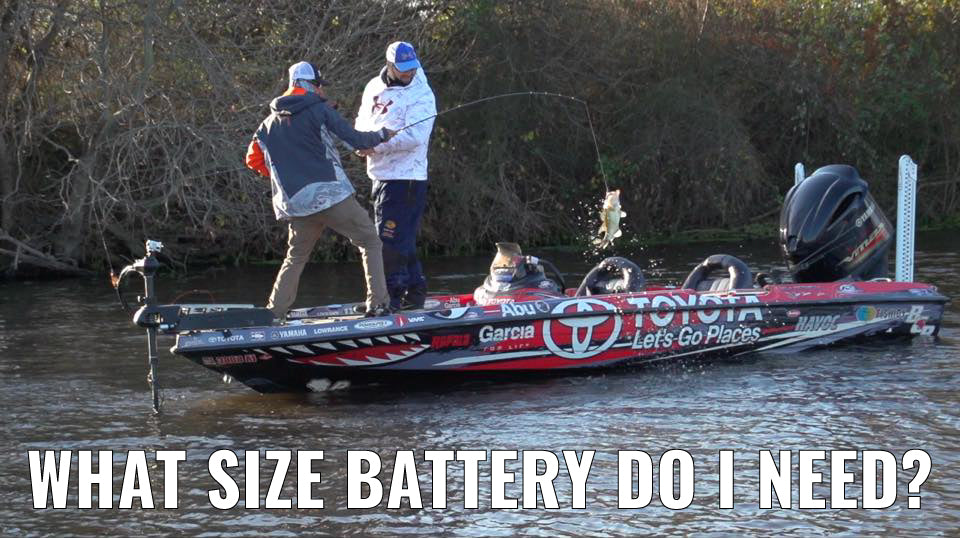One of the most common questions we get from boaters and fishermen when they call us is what size deep cycle battery do I need for my electronics and/or trolling motor?
This is a complicated question with a lot of variables, but the basic process to determine the size is simple. Here is the outline and then we will run through an example scenario:
- Make a list of all of the loads (devices) that the battery will provide power for
- Determine how many hours that you need each of those devices to run on a typical outing in your boat
- For trolling motors, determine what level of throttle you normally use and what conditions you want to plan for in terms of water current and wind
- Look up the electrical specifications for each of the devices you listed on the manufacturer's website and note the maximum current (amps)
- Multiply the maximum current for each device by the number of hours you will be using each device
- For trolling motors, you can guesstimate the average current value based on how hard you are on the throttle and the harshness of conditions
Lets go through an example. John Doe wants to upgrade his AGM batteries to lithium for his 24V Minn Kota Terrova 60" 80lb thrust trolling motor. He does not run any electronics off of the battery bank. On an average day fishing, he uses the trolling motor for 6 hours and never goes past half throttle.
Minn Kota and their retailers are notorious for not providing detailed electrical specifications for their motors and electronics, at least not that are easy to find on a product page. John eventually found a handy PDF (https://www.minnkotamotors.com/sites/minnkotamotors_site/files/min_productmanual_batt-wire-selct-gde1.pdf) and determined that his maximum current draw for his trolling motor is 56A. He did some more research on some boating forums and found that low throttle on an 80lb thrust motor should be around 5A and half throttle should be around 20A so he averages those numbers together to get 12.5A.
12.5A x 6h = 75Ah (@24V)
So John decides to purchase two 12V 75Ah lithium batteries to meet his needs. Wired in series, just like the factory AGM batteries, will give him 75Ah of battery capacity at 24V (series wiring doubles the voltage while keeping the capacity the same).
Keep in mind, John could have opted for two 12V 100Ah batteries if he wanted to plan for extreme conditions or allow for more than 6 hours on the water. He also could have opted for the bigger size batteries if he was concerned about discharging the batteries to 0% State of Charge (SoC). While discharging to 0% will not damage the batteries, it does wear them out faster and results in slightly less "cycles", which are the number of times you can charge and discharge a battery. Thankfully, lithium batteries can be charged and discharged thousands of times so this is really not a big issue. We will cover that in an upcoming blog post.

